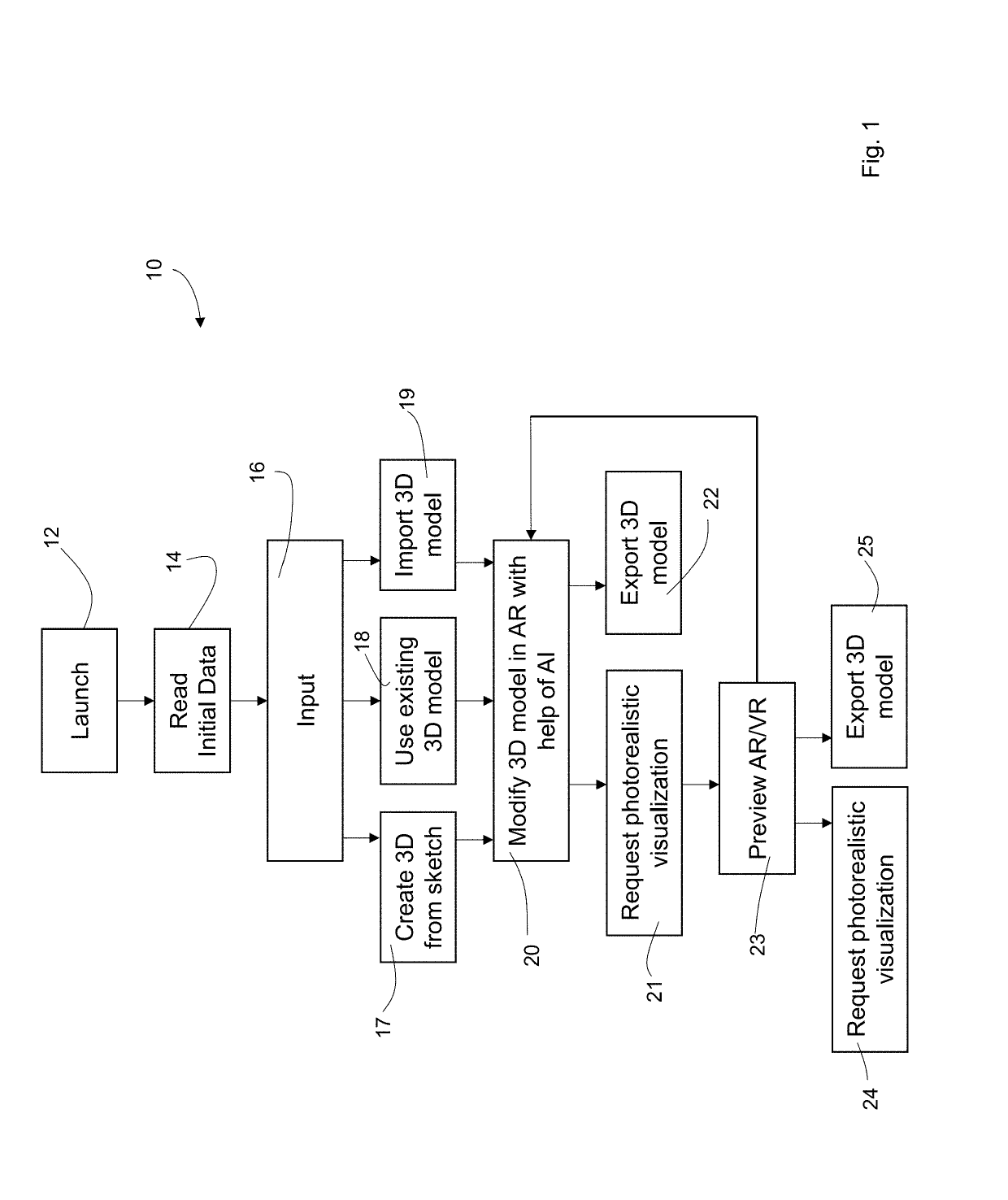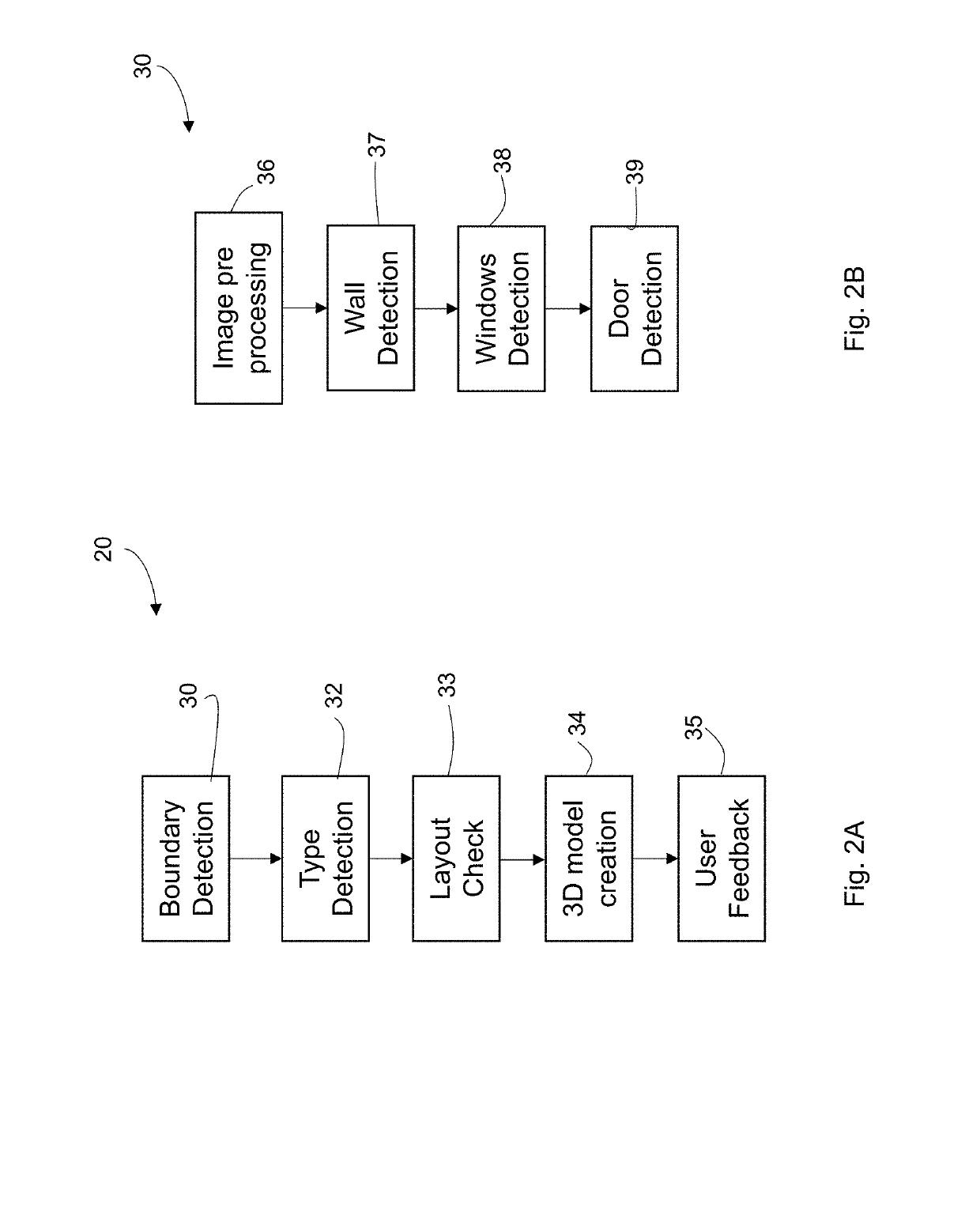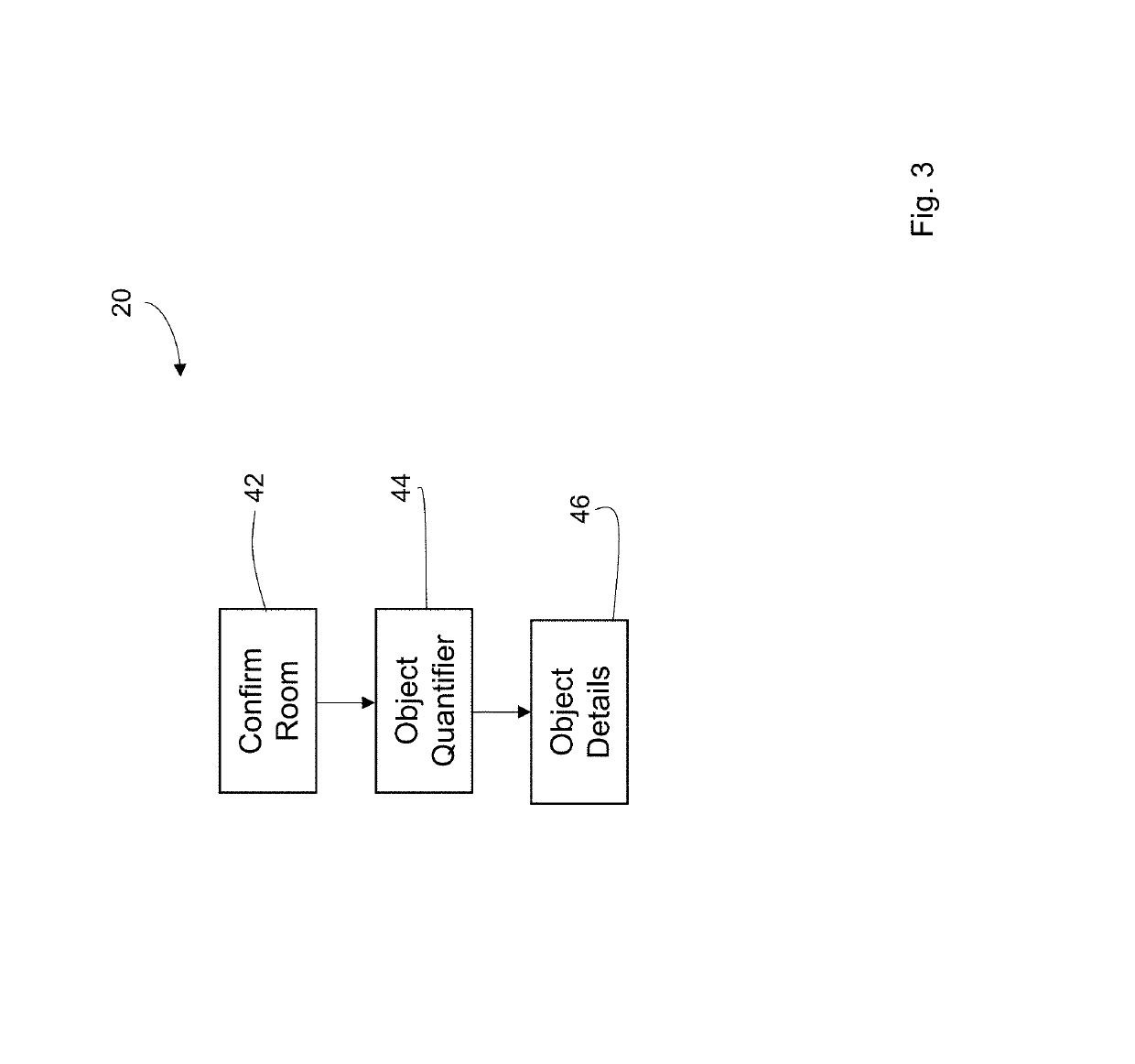Augmented reality method and system for design
a technology of augmented reality and design software, applied in the field of augmented reality method and system for design, can solve the problems of inability to enter the initial design idea into the system, the task of inputting the initial design model is an ever-present obstacle to many users beginning work on their design, and the user of such design software is presented with a blank page at the start, so as to save time
- Summary
- Abstract
- Description
- Claims
- Application Information
AI Technical Summary
Benefits of technology
Problems solved by technology
Method used
Image
Examples
example interface
[0097]A sample user interface is shown in FIG. 4. As shown in FIG. 4, the system 10 interface shows the step 18 of confirming the layout. The interface is shown on a portable device 60. The system 10 is showing the preliminary design 62 as super-imposed on a photo of the two-dimensional sketch 64. The sketch 64 is drawn on a sheet of paper 66. The sketch fits within the boundaries of the device 60 screen 68.
[0098]Three phases of the system are depicted inFIGS. 5A-C. First, as shown in FIG. 5A, the end user draws an informal two-dimensional sketch 82 on a piece of paper 84 using a high-contrast marking instrument 86, such as a marker.
[0099]Second, in FIG. 5B, the end user takes a photo of the sketch using a portable device 90, such as a cell phone. The phone accepts the input of the paper-based sketch 84 and displays the input to the user 92, already rotated and de-skewed. Finally, as shown in FIG. 5C, a three-dimensional design 98 is shown to the end user, following the detection 20...
process example
Design Process Example
[0101]FIGS. 7A-F depict an overview of the design process using one embodiment of the invention. As shown in FIG. 7A, the process begins with a sheet of paper 112 on a work surface 110 such as a table shown in FIG. 7A. The end user draws a sketch 114 on the paper 112 using a suitable writing utensil 116. While the sketch shown in FIG. 7A depicts features such as doors and windows in a formal manner akin to an architectural drawing, the system accepts as input an informal drawing where the doors and windows are indicated in any number of possible ways. The system is able to infer which user-selected symbols indicate a door or window.
[0102]In one embodiment, the system indicates to the end user if a particular room is unreachable or if too many rooms lack windows as these may indicate that the design is incomplete.
[0103]Further, while the sketch 114 shown in FIG. 7A appears formal, it nonetheless is lacking many architectural details that are not required by the ...
PUM
 Login to View More
Login to View More Abstract
Description
Claims
Application Information
 Login to View More
Login to View More - R&D
- Intellectual Property
- Life Sciences
- Materials
- Tech Scout
- Unparalleled Data Quality
- Higher Quality Content
- 60% Fewer Hallucinations
Browse by: Latest US Patents, China's latest patents, Technical Efficacy Thesaurus, Application Domain, Technology Topic, Popular Technical Reports.
© 2025 PatSnap. All rights reserved.Legal|Privacy policy|Modern Slavery Act Transparency Statement|Sitemap|About US| Contact US: help@patsnap.com



